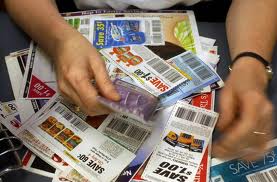For the next few weeks, I’ll be featuring a few posts each week as a part of a series called “Couponing A to Z” which will hopefully give you tips to get started with couponing! Today I’m going to talk about how to understand the “fine print” on coupons. If you haven’t already, check out the rest of my Couponing A to Z series here.
If you’re new to using coupons, you may be confused by some of the “fine print” terminology on those coupons. Don’t worry – plenty of store employees are confused as well! Here’s some scoop on “the fine print.”
Purchase vs. Transaction: Typically in the fine print of coupons, you will see wording that says something to the effect of “Limit 1 per purchase” or “Limit 4 per transaction.” The “purchase” refers to each item being purchased and means that you can only use one coupon per item. This is the intent of this wording, but I have had to argue this point more times than I can remember with cashiers and store managers. If there are limits per transaction, this means you can only purchase that amount of items in that transaction. Many P&G coupons now contain wording that limits your purchases to 4 per transaction. Most Target store printable coupons contain a “one per transaction” wording. Some stores will allow you to do back to back transactions to get around this wording, but I typically don’t try to push this because I want to have good relationships with my stores.
Do Not Double: Some coupons say “DND” or “Do Not Double” on them. This does not necessarily mean that those coupons will not actually double. I know this is INCREDIBLY confusing!
Here’s a coupon for reference purposes:
On the lower left hand side, you’ll notice a code along the bottom that starts with a “5″ From my experience, even if the coupon says “do not double/triple” at the top, if the code at the bottom starts with a “5″ your coupon will still double. (The code on this coupon starts with a “5″)
If the code at the bottom starts with a “9″ then the coupon will not double/triple. Most of the “blinkie” coupons you find in the machines in grocery stores start with a “9″ and will not double or triple.
Please keep in mind that doubling or tripling coupons is usually a store promotion and the store absorbs the cost, so a store may choose to double or triple coupons even though it says “Do Not Double.” To find out if our stores will double or triple these coupons, it will basically be a matter of trial and error. Try it with one and see if it works!
To find out more about how to double and triple coupons, check out this post here.
*This post may contain affiliate links. Please refer to my disclosure policy for more information













